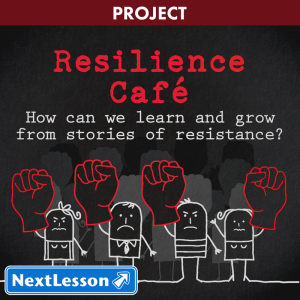Check out December’s featured resources – seasonal lessons, subject area content, and some of our staff favorites too!
Great Adaptations
Grade(s): 9, 10
Subject(s): ELA
In this short project, students explore how writers can change and transform a source’s material by creating their own adaptation of Charles Dickens’ A Christmas Carol, or another story. Students will read A Christmas Carol, watch an existing adaptation, compare them with the original, explain what they think makes for a good adaptation of a classic story, and then write a script and present their own adaptation of the story.
The project concludes with a short showing and discussion of students’ ten-minute adaptation. Included are video suggestions, hand-outs, and resources about Charles Dickens and 19th-century London, in addition to a rubric and reflection sheet.
The Story of Antibiotics
Grade(s): 9, 10, 11, 12
Subject(s): ELA, Sscience
In The Story of Antibiotics, students read and evaluate the science behind the development of antibiotics. They’ll read a scientific article edited written by scientists and edited by students their age, rank the stages of development by importance, and finally write a Science Explainer – informative writing – for a younger audience.
This lesson includes links, a rubric, a Rank & Reason activity, writing prompts, and tips for working with students remotely.
NextLesson is proud to share and promote Frontiers for Young Minds in its mission to bring free readable and accessible science to students around current discoveries and core concepts. We especially love the student empowerment we see as Frontiers for Young Minds encourages students to be real-world science editors.
Annotating Poetry – I Hear America Singing
Grade(s): 9, 10
Subject(s): ELA, Social Studies
Poetry can seem complicated because the form and language used are so different from the way we normally communicate. Yet, when the code of poetry is unlocked, we find that the poet has a message for the reader and this message is open to interpretation.
Unlocking a poem’s code through annotation of key words, identification of form, and making margin notes can bring a poem to life and make clearer the author’s intent and message to the reader.
This lesson will instruct students on how to annotate a poem using I Hear America Singing by Walt Whitman so that they can come to a valid and supported conclusion as to what the poem means. In this lesson, students will learn to note key words, identify form, and make marginal notes (annotations) to assist in understanding the poem.
A Christmas Carol – Character Analysis
Grade(s): 9, 10, 11, 12
Subject(s): ELA
Students begin the analysis by discussing examples of characters in seemingly simple stories and their character traits. They then apply their analysis experience to the characters in the play A Christmas Carol by Charles Dickens.
They will evaluate a list of characters and determine which character changed the most during the story. Working with a discussion partner, they will rank characters and justify their reasoning using the Rank & Reason tool.
A differentiated writing prompt follows the discussions and students are challenged to analyze, citing evidence from the text, characters in the story.
Resilience Cafe
Grade(s): 9, 10
Subject(s): ELA, Social Studies
Students who struggle the most in the classroom are often forced to be resilient in their lives outside of the classroom. In the past, the struggles that they faced and overcame outside the walls of the classroom often remained separate and unrecognized.
The Resilience Café project brings those struggles from the outside into the classroom to be recognized and celebrated for the impact they have on students and the strength they build. The project seeks to connect stories of resilience from history with stories of resilience from our communities and our personal lives.
During Resilience Café, students learn about resilient heroes from the past and present. Many of these heroes are especially prominent in African American history, ranging from the Civil War to the Civil Rights Movement. Students explore together what it means to be resilient and the music, art, literature, and work that can be born out of resilience.
They identify specific attributes to celebrate and communicate. Students connect a resilient historical figure, a resilient community member and their own personal story of resilience through writing and spoken word poetry. They honor their resilient community members by inviting them to a night of celebration through spoken word performances.
Resilience Café teaches students about the following major concepts and content.
• Attributes of resilience
• Resilient figures through history, especially African American history
• How students and members of the community today show resilience
Be sure to check out all our 9-12 ELA/Social Studies content here.





